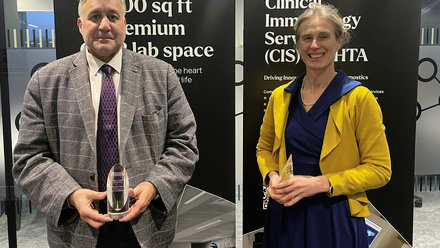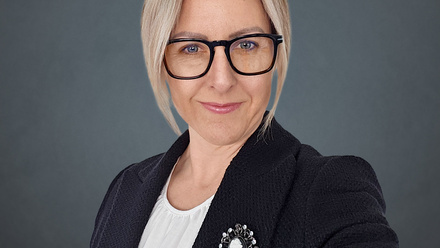Spotlight on hearing therapeutics blog series: opportunities in the emerging science

This is part of a series of blogs focussing on hearing therapeutics from different sector perspectives. In the third blog, Karen Steel, Professor of Sensory Function at King’s College London, shares her thoughts on what she perceives to be some of the biggest opportunities in relation to the emerging science enabling the development of new treatments for hearing loss.
Current landscape
Hearing impairment is very common in the population and can begin at any age. Childhood deafness affects one in 1,000 children at birth and with age, this number increases until over half of adults in their 70s have a significant hearing loss. Hearing impairment isolates people from society, is often associated with depression and cognitive decline, and is a predictor of dementia. Recent success in pilot clinical trials of gene therapy for children with mutations of the otoferlin gene OTOF have shown that in specific cases it is possible to restore hearing, encouraging hope in other types of deafness. Otoferlin-associated deafness has the advantage that sensory hair cells persist for a considerable time, providing the target cells for the gene therapy reagents to transfect. Still, in many other cases of deafness due to single-gene mutations, the hair cells degenerate over time and are never regenerated. The vast majority of people with hearing loss have no genetic diagnosis and the only remedies currently available to them are hearing aids and cochlear implants, but these do not restore normal function or halt the disease process. There is a large unmet need for medical approaches to slow down or reverse progressive hearing loss.
Hearing impairment is a heterogeneous disorder. Environmental factors such as noise contribute, but genetics plays a major role. Hundreds of syndromes include deafness and over 150 different genes have been identified underlying non-syndromic deafness, including many with adult onset. Nonetheless, our investigations of the genomic basis of progressive, age-related hearing loss in the population have suggested that there are no obvious low-hanging fruits to guide development of personalised gene-based therapies.
Opportunities
So how will the landscape of treatments for hearing loss look in the coming years? The success with OTOF gene therapy suggests that there will be a small number of individuals, mostly children and mostly in wealthy nations, who could benefit from gene therapy targeted to specific mutations causing their inner ear pathology. These approaches will need further optimisation and may extend to a few other suitable genes in addition to OTOF. The trick will be to identify people who could benefit from gene therapy before degenerative changes in the inner ear have progressed too far, before the end of the “critical period” for treatment. This brings us to diagnostics.
Genetic analysis of families can be useful in diagnostics by finding causative mutations, particularly in affected children. However, in most cases of adult-onset hearing loss, it will be difficult to find a single-gene DNA variant that likely causes the deafness. This is because it is much more difficult to carry out family studies in older people compared with children, and environmental factors such as noise exposure will accumulate with age, complicating interpretation. Individuals may carry two or more genomic variants that interact to predispose to progressive hearing loss, and this also complicates diagnosis. Looking for signs of syndromic deafness may help with diagnosis.
An alternative approach is to develop tests for sites-of-lesion within the cochlea, the inner-ear structure responsible for converting complex sounds into nerve impulses that can be interpreted by the brain. There are many specialised cell types within the cochlea, any one of which can be involved in the pathological changes leading to hearing loss. The three most common sites involved in age-related, progressive hearing loss are:
- the sensory hair cells
- the synapses between hair cells and auditory neurons, and
- the stria vascularis on the lateral wall of the cochlear duct, responsible for maintaining the high voltage and unusual high-potassium, low-sodium content of the endolymph fluid bathing the tops of the hair cells.
In the absence of obvious gene-based therapies, we may instead be able to develop drugs to boost stria vascularis function or encourage nerve endings to reconnect with hair cells or promote repair of hair cells to prevent their degeneration, if only we could distinguish the main site-of-lesion in people walking into the clinic.
In my research group, we are making some progress in developing objective physiological tests to distinguish these very different sites-of-lesion. A diagnostic protocol could improve selection of people with the same site-of-lesion for clinical trials of treatments, enhancing the chances of successful outcomes, as well as providing more sensitive outcome measures. At the moment, clinical trials can include people with a wide range of underlying pathologies, which will dilute any beneficial effects and lead to more trial failures. When treatments for key underlying pathologies are available, a diagnostic test panel will aid in selecting the best therapeutic for each person, targeted to their site-of-lesion. A diagnostics test panel could also contribute to better personalised fitting of hearing aids of all types including programming of cochlear implants, and may help us understand the variation in effectiveness of these devices.
Conclusion
In summary, the future may look like this. A few children will be identified by neonatal genome screening and will benefit from gene therapy techniques to restore their hearing. The majority of the population will go to their High Street audiologist to have their hearing tested every two years, at the same time as they have their vision tested now. A diagnostic test panel will detect early signs of impaired auditory function, and some of these types will have drugs available that can be used before the critical period for intervention has passed. The same diagnostic tools will be used to stratify clinical trials and provide objective outcome measures, improving the chances of success for the targeted population and improving the range of therapies available to the very large numbers of people who do not want to lose any more of their hearing.
Want to find out more?
If you enjoyed this blog and want to find out more about hearing loss therapeutics, why not join our Hearing Therapeutics Initiative or contact us directly to discuss how the HTI network could support you and your innovation.






